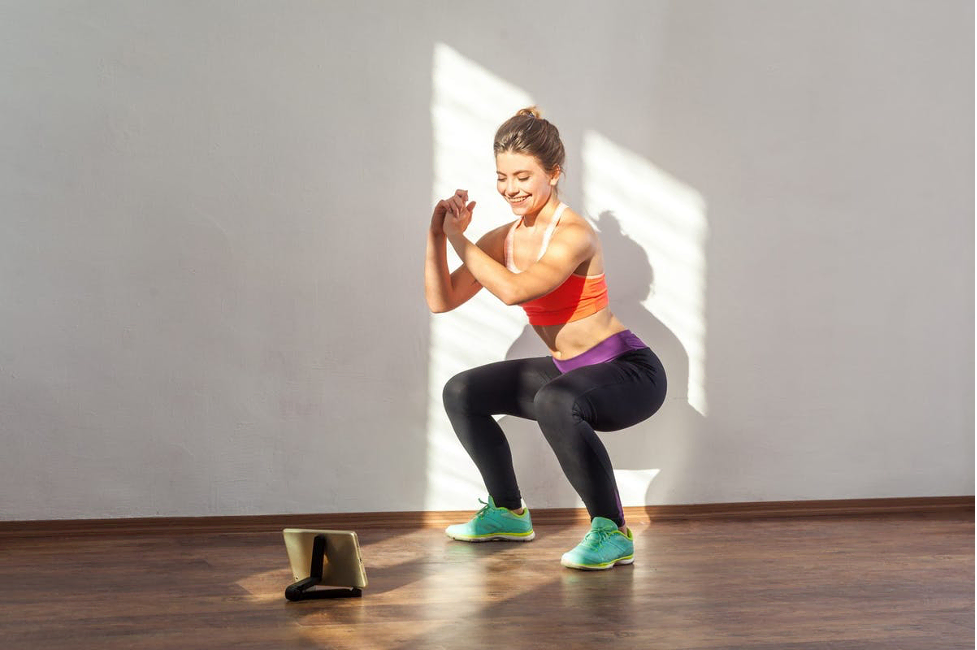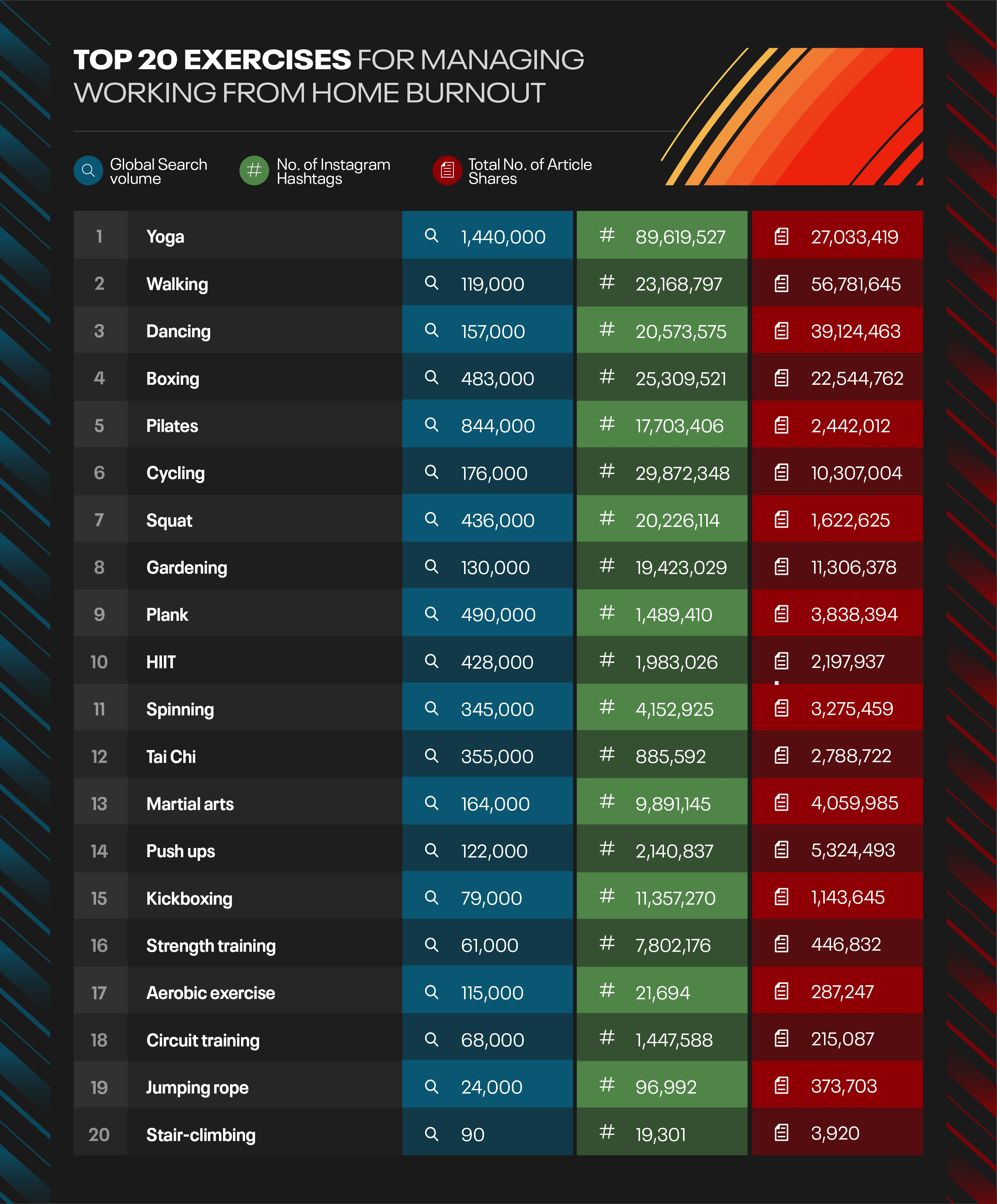6 Ways to Improve Wellbeing Through Sport & Fitness for Students and Apprentices

Physical and mental wellbeing have been at an all time low for many people during the COVID-19 pandemic, due to lack of social interaction, the closure of gyms and other sports facilities.
Now, a new study by Reebok has shared six ways that sport and fitness can help improve physical and mental wellbeing whilst in lockdown – especially for those cooped up working from home, applying for jobs or apprenticeships.
Fitness Gives You the Opportunity to Take Time Out of Your Day to Focus on Yourself
When you’re out doing exercise it gives you the opportunity to zone out of your day-to-day tasks, work and revision. Why not play one of your favourite podcasts, or have your favourite playlist on to really help you get in the zone. It’s been very difficult to switch off in the past year, especially if you’re studying and living in the same flat or house. Doing sport and exercise can help you switch off and partition your day between work and relaxation time.
During Exercise, Your Body Creates Endorphins Which Are Feel-Good Hormones
Exercise, whether it be going for a run alone or having a kick-about with your household bubble on the park, will cause your body to create endorphins. Endorphins relieve stress and pain, meaning that something which was worrying you before exercise could seem a lot more manageable and easy-to-accomplish once you’ve enjoyed a fitness activity.
Virtual Sports Clubs Are a Great Way to Meet New People
Joining a local sports club is a great way to meet new people outside of your job or school work. Social interaction is critical with everyone missing out at the moment, which means that once lockdown is lifted and it’s safe to play sports and meet new people again, it should be easier than ever. If you join a sports team you know that you already have a common interest and they tend to be groups of like-minded people. Many sports teams offer taster sessions, so if you’re not sure what sport is for you, arrange a few taster sessions and see which one you enjoy the most.
Exercising Helps Reduce Your Risk of Serious Illness
It’s well known that exercise is good for you, but did you know it can help reduce your risk of heart disease, type 2 diabetes and even a stroke. Also, exercise is proven to result in healthier organs. Your heart has to work harder to ensure blood is still reaching everywhere in your body, which results in a stronger, healthier heart having a positive impact on the likelihood of developing illnesses such as high blood pressure.
Exercising Means You Will Enjoy a Much Better Nights Sleep
With all the days blurring into one it can be very easy to lose a sleep pattern and find yourself watching Netflix later and later into the night. Sleep is very important for our body as it allows your body to recover from the activities of the day and prepare for the next one. If you’ve been active during the day your body allows you to reduce stress – which is a large contributor to a bad night’s sleep – and will tire you out, meaning you’ll want to go to bed earlier than normal.
Yoga, Walking and Dancing Are the Top Exercises to Avoid Working from Home or Job Search Burnout

The study by Reebok revealed, the most popular physical and mental exercises to do while working from home was revealed in an effort to combat burnout and improve health and productivity.
These are the top 3 exercises to try at home to improve your wellbeing:
YOGA
With an average of 1.4 million searches each month, 89.6 million hashtags on instagram and 27 million article shares this year, Yoga is an excellent stress-relief exercise, which involves a series of moving meditations, stationary poses, or postures, which are further combined with deep breathing techniques.
Yoga is a key form of exercise for stretching and strengthening the shoulders, back, and abdominals after a day in front of a computer screen. This is necessary as “failing to combat the daily ‘hunch’ poses detrimental effects to our posture” as well increases the “risk of injury and inability to perform.” according to Harvey Lawton.
Walking
Walking is a simple exercise that helps to boost our mood and relieve stress. With an average of 119,000 searches each month and 56.8 million article shares on the topic globally, it is the second most popular exercise for managing burnout. Walking helps to release tension in the body, both in the neck and in the legs. At the same time, walking can frequently reduce the incidence of stress-related conditions such as cardiovascular disease, high blood pressure and high cholesterol.
Walking helps to stretch and strengthen muscles and is also “beneficial for the hippocampus – which is the part of the brain that acts like a brake on the stress response”, says Ruth Cooper-Dickson, Positive Psychologist.
Dancing
Dancing is a top exercise that can be done in any spacious room you have at home as an instant mood booster and stress reliever. With physical as well as mental benefits, dancing is a great workout that improves grace and agility as it raises your heart rate whilst using your legs actively, helping to strengthen your body and core muscles, simultaneously burning calories and reducing your risk of injury.
Dancing is a great exercise “for activating GABBA (Gamma-aminobutyric acid) — this is an amino acid whose purpose is to calm the brain and act as a fire extinguisher to enable brain cells to suppress their activities.” comments Ruth Cooper-Dickson. “GABBA activation also provides quick and effective stress relief” in an effort to clear your mind after a stressful working day.











Responses